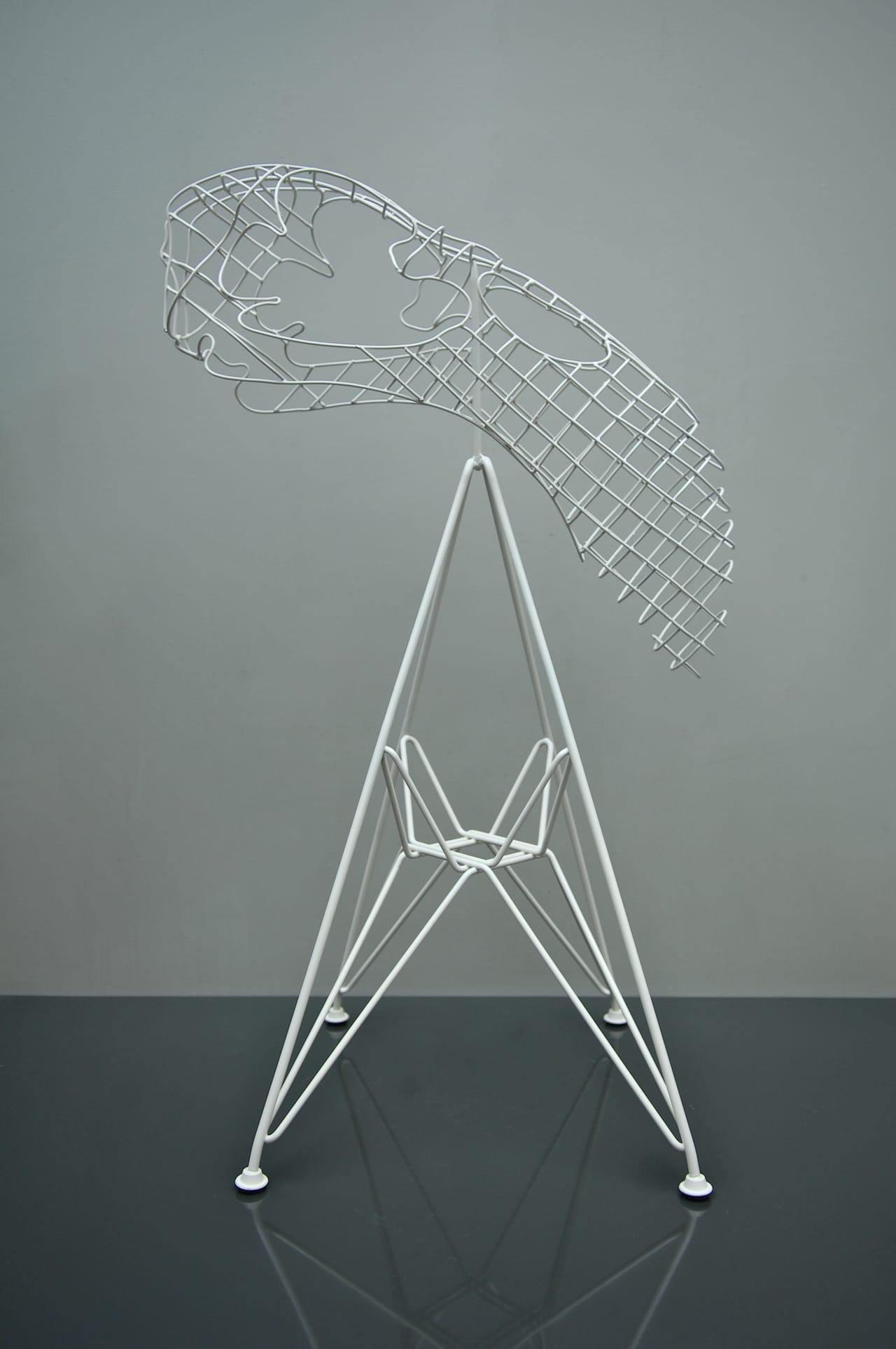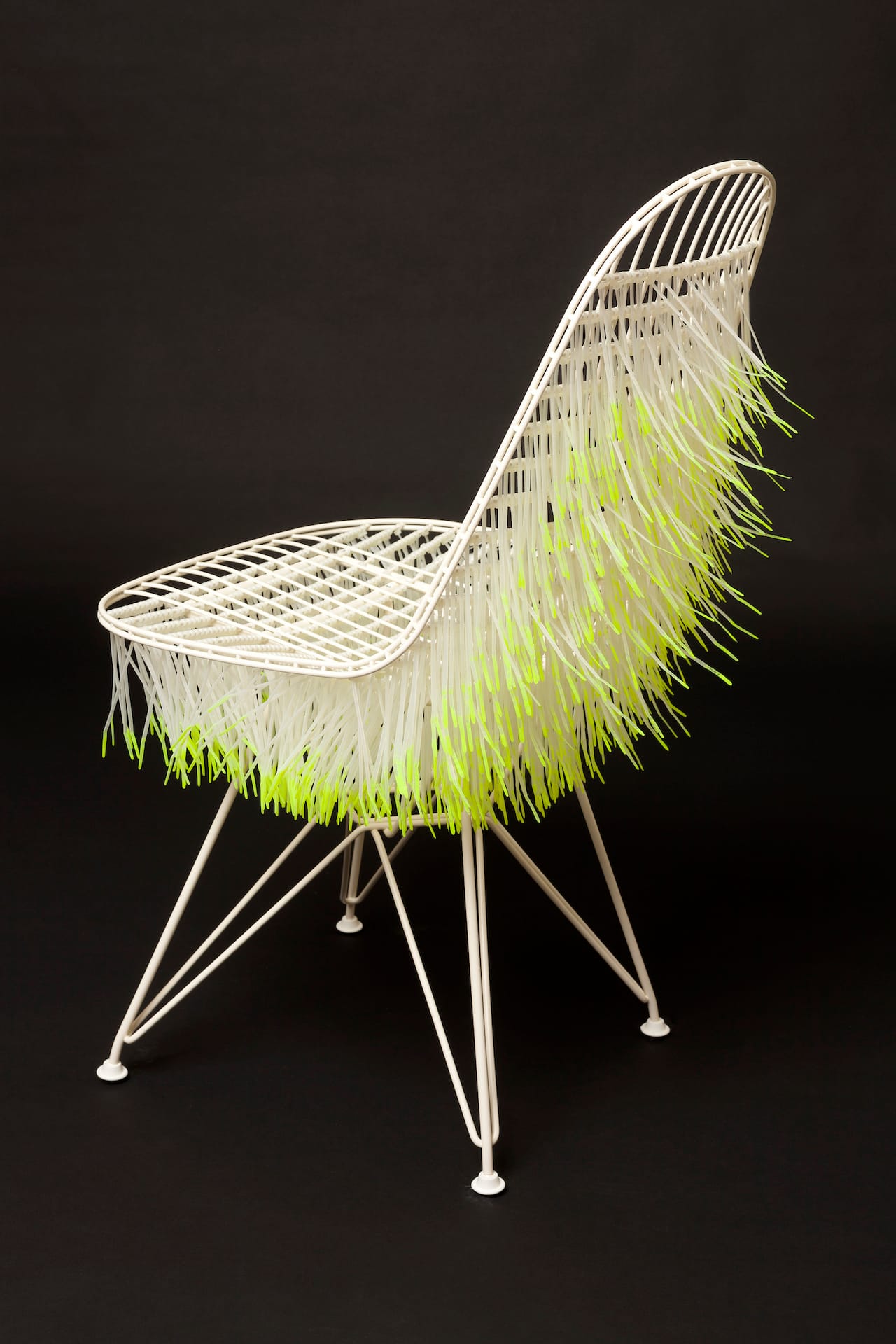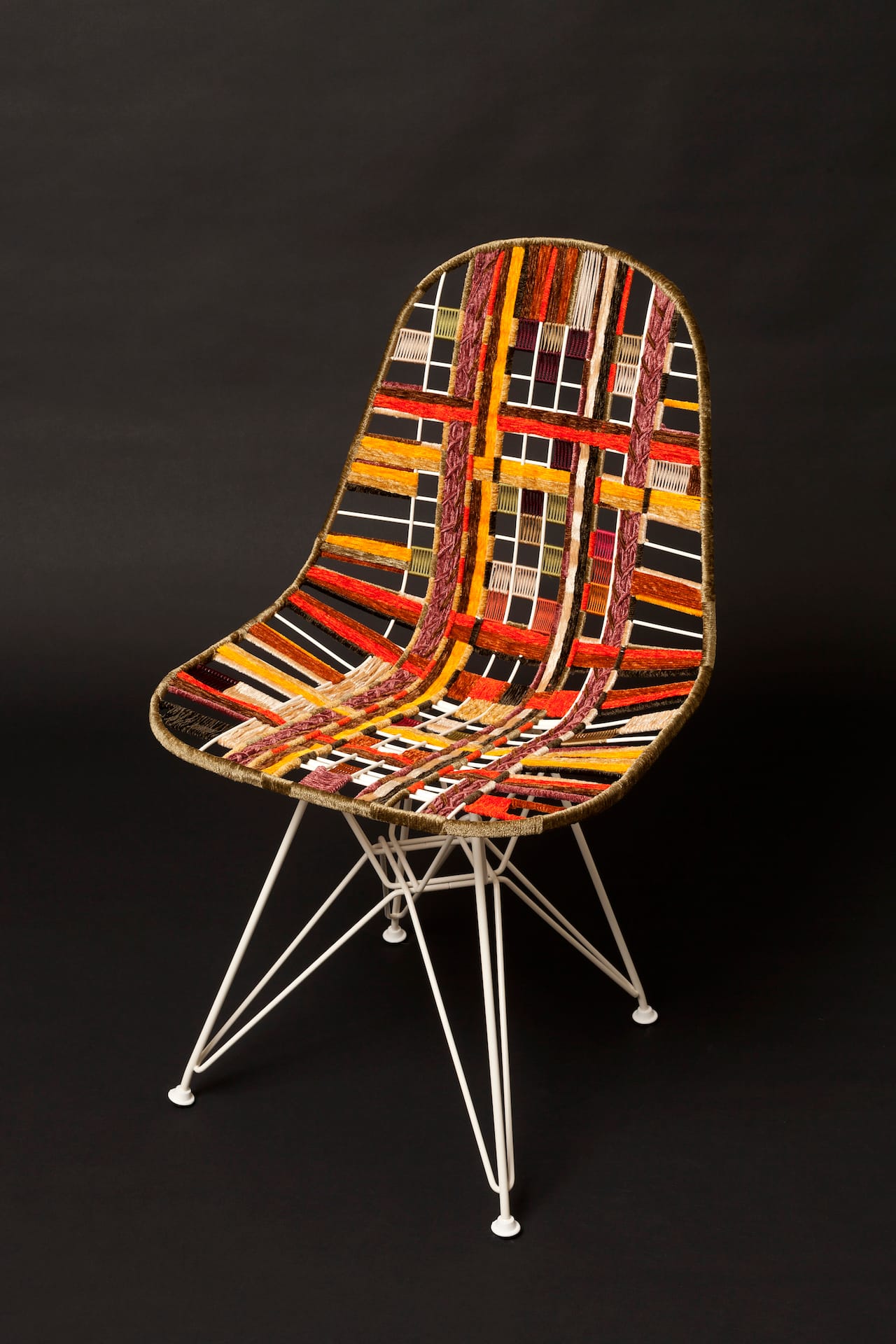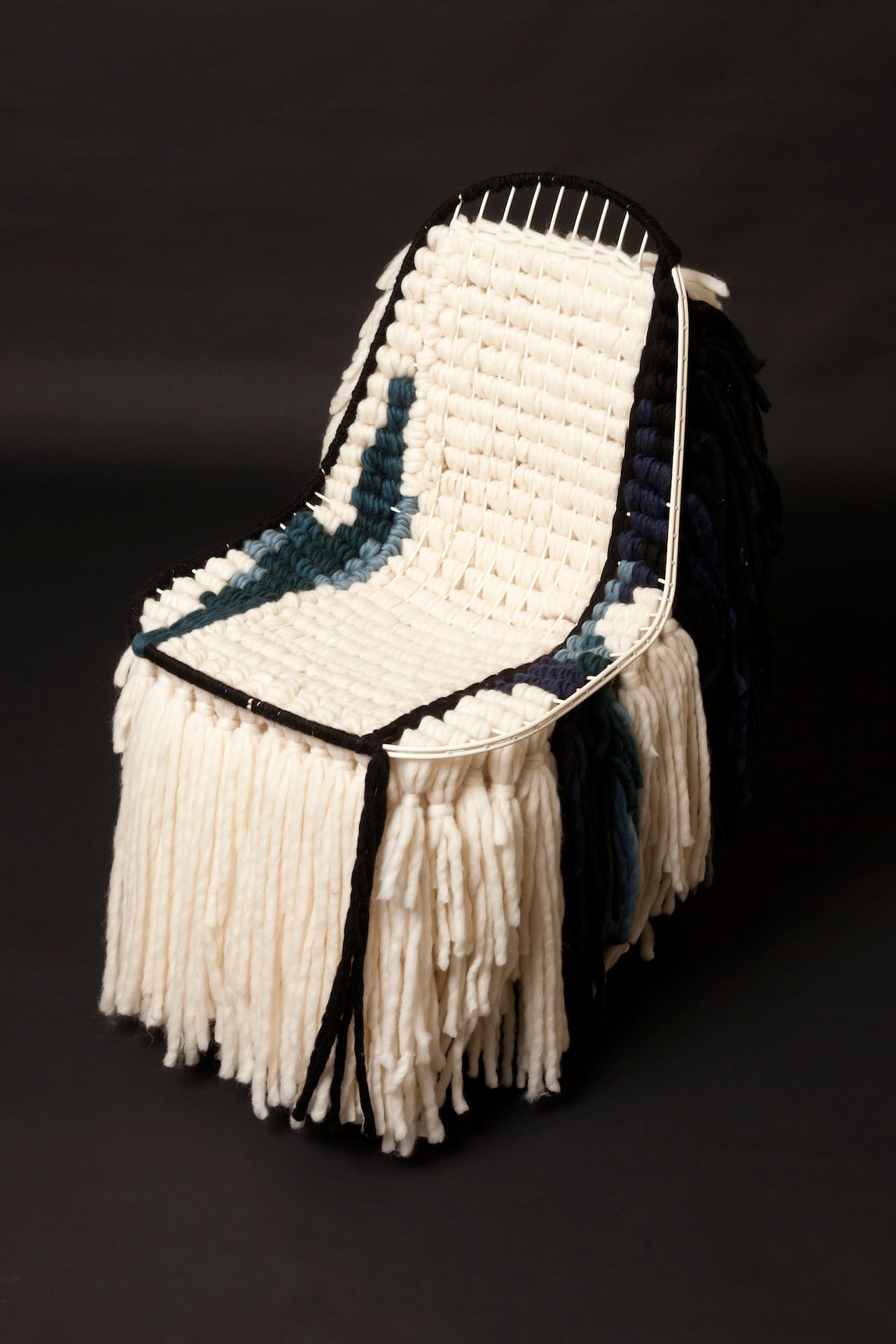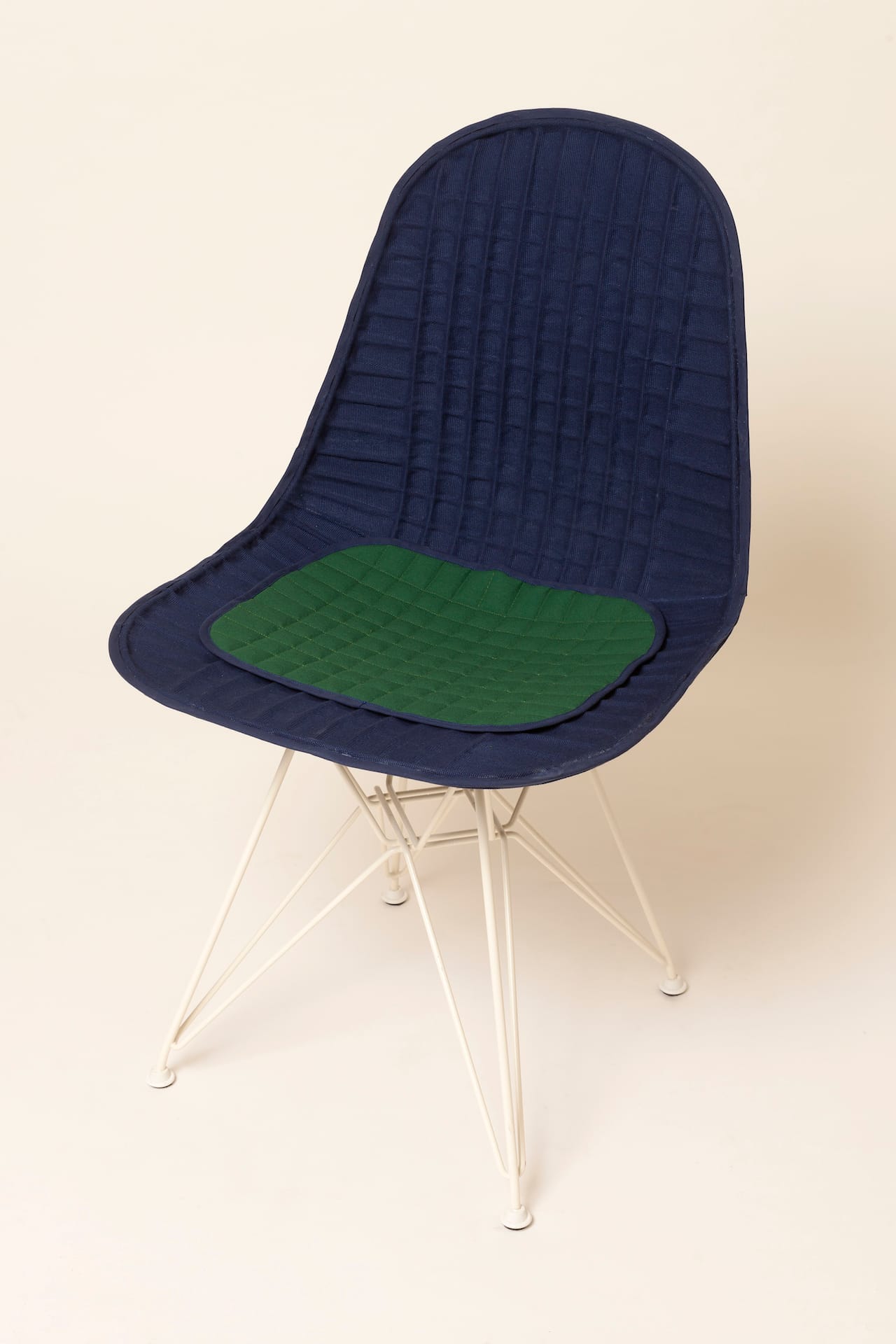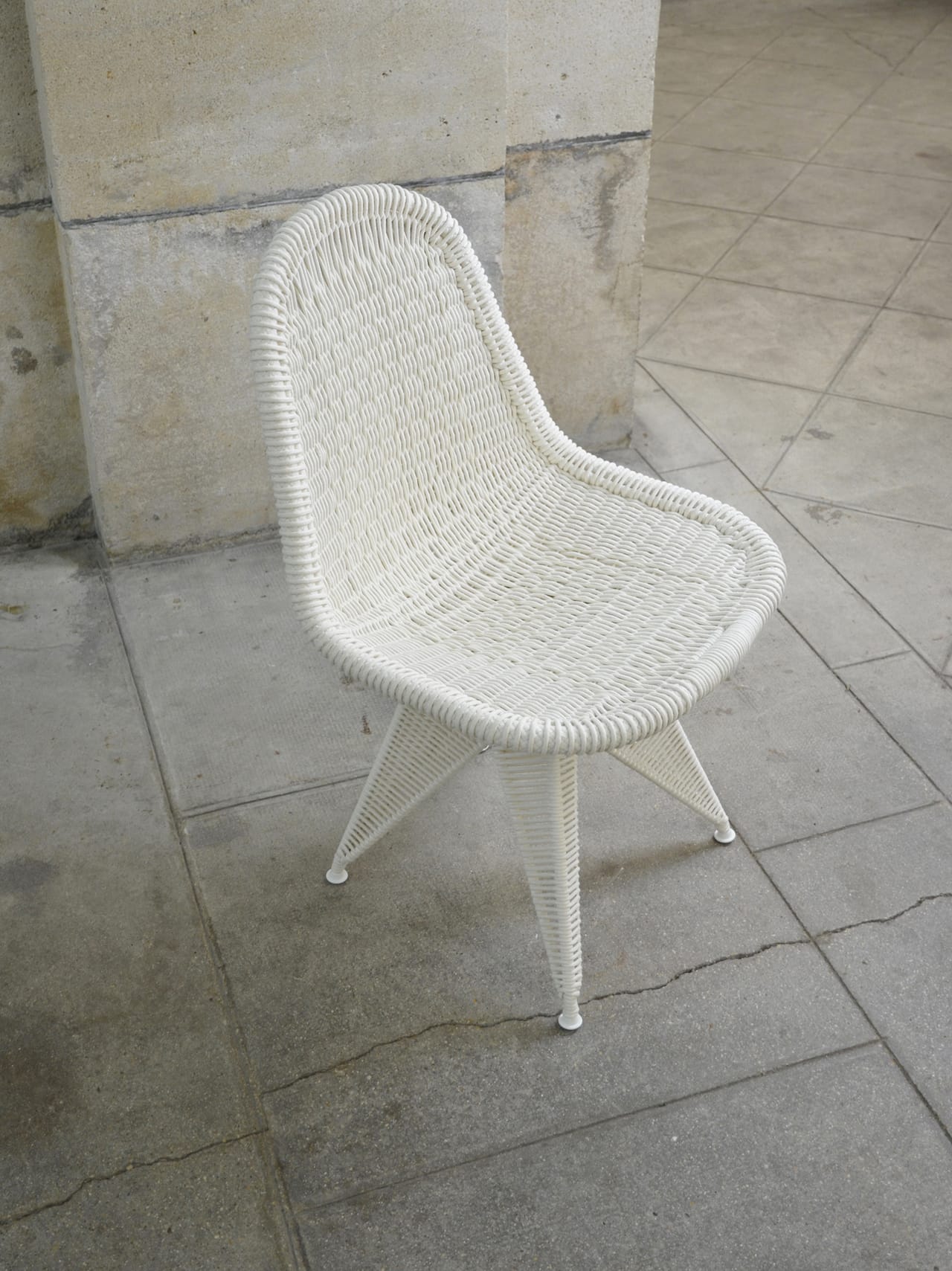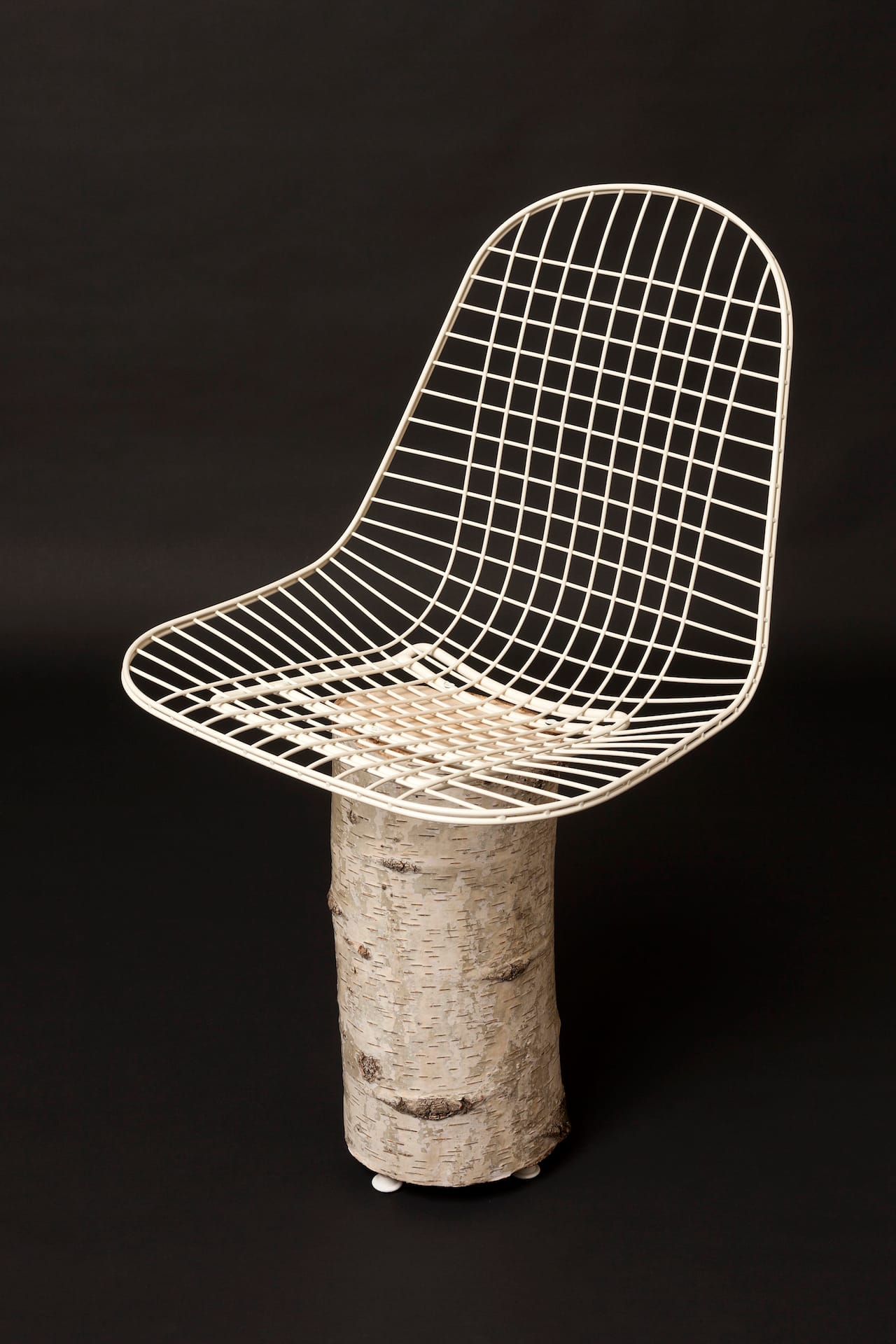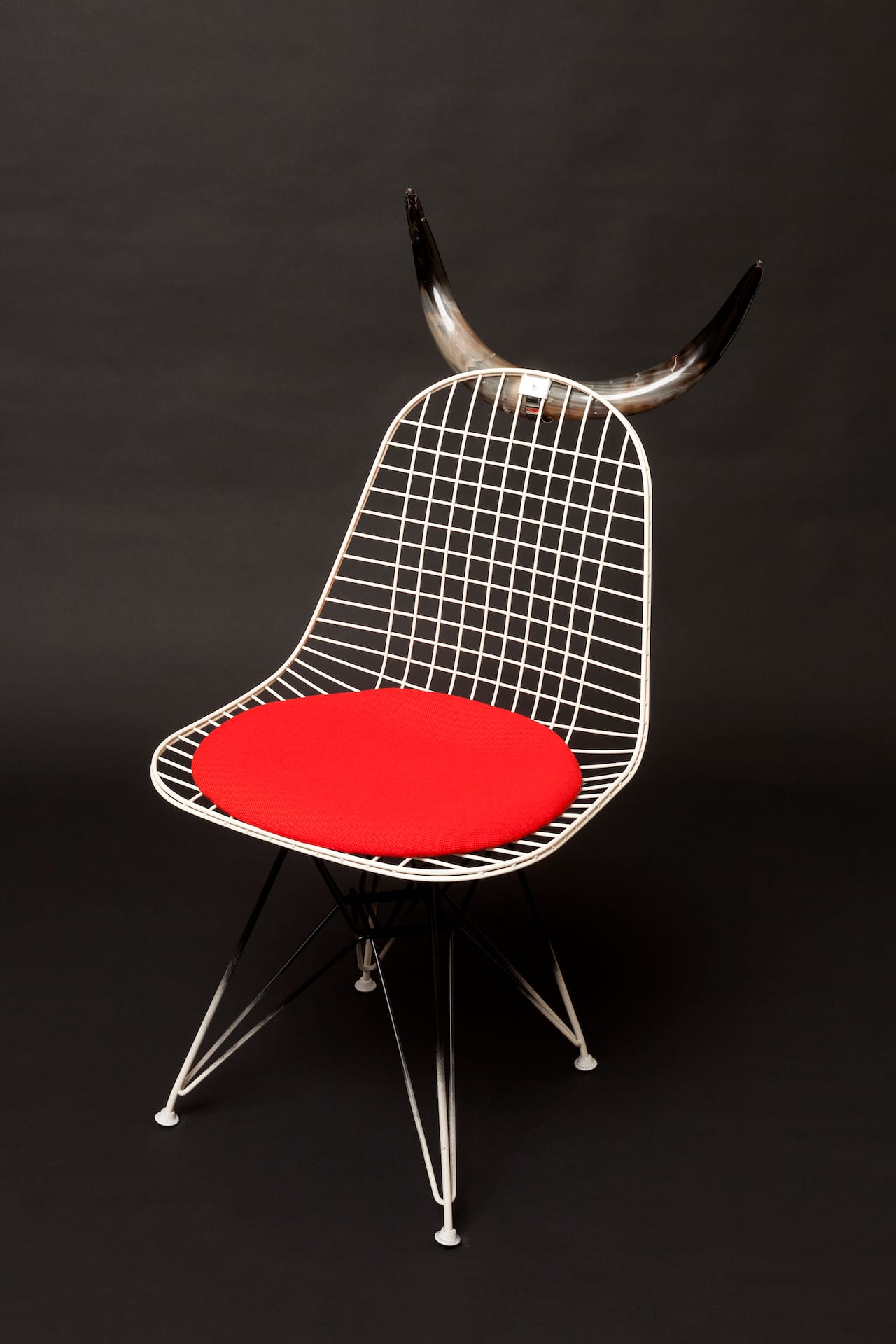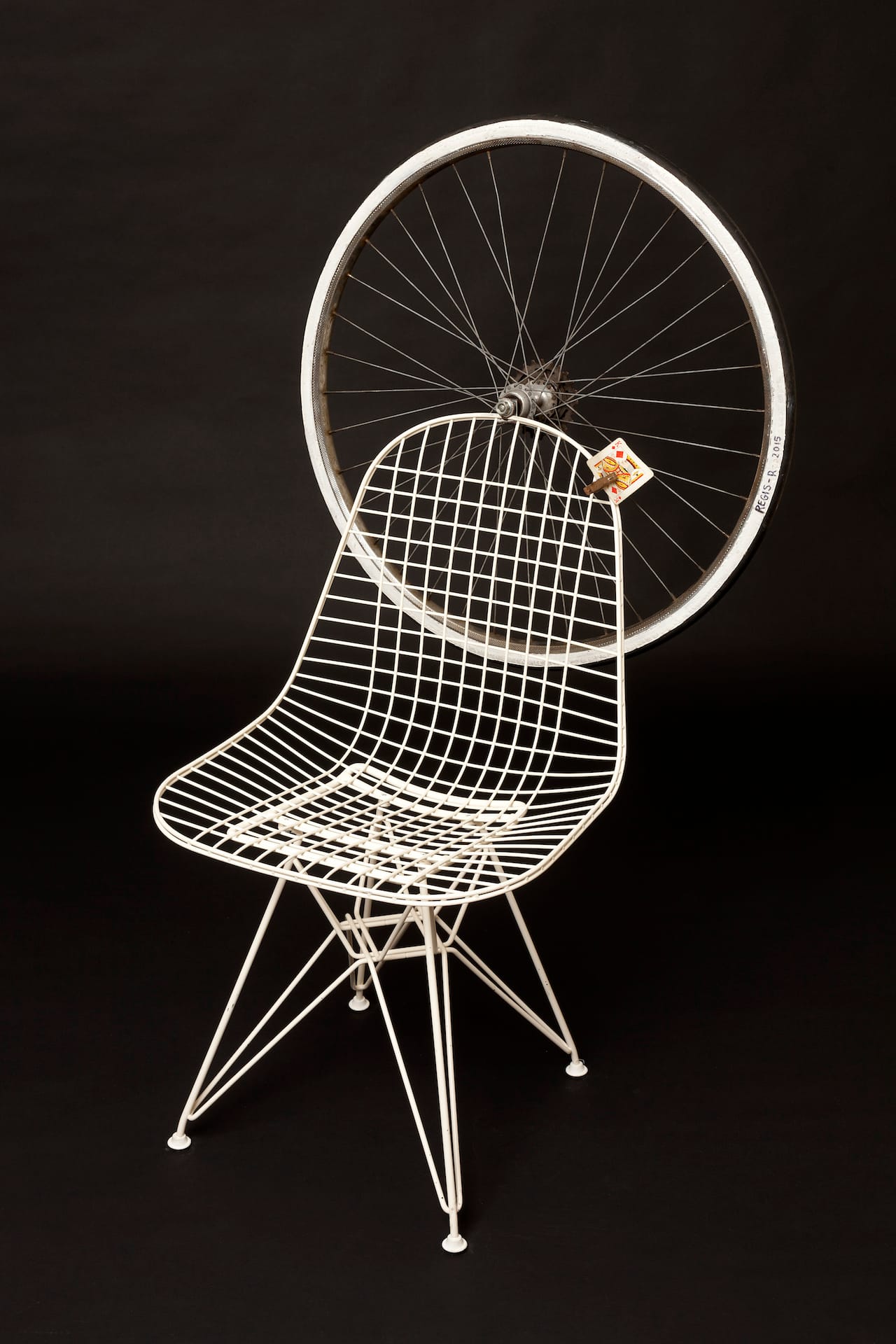50 Reinterpretations of the Eames Wire Chair
The French social and education arts organization La Source has partnered with Vitra Design Museum to invite artists, designers, and architects from around France to revisit the classic chair and add their own contemporary twists.
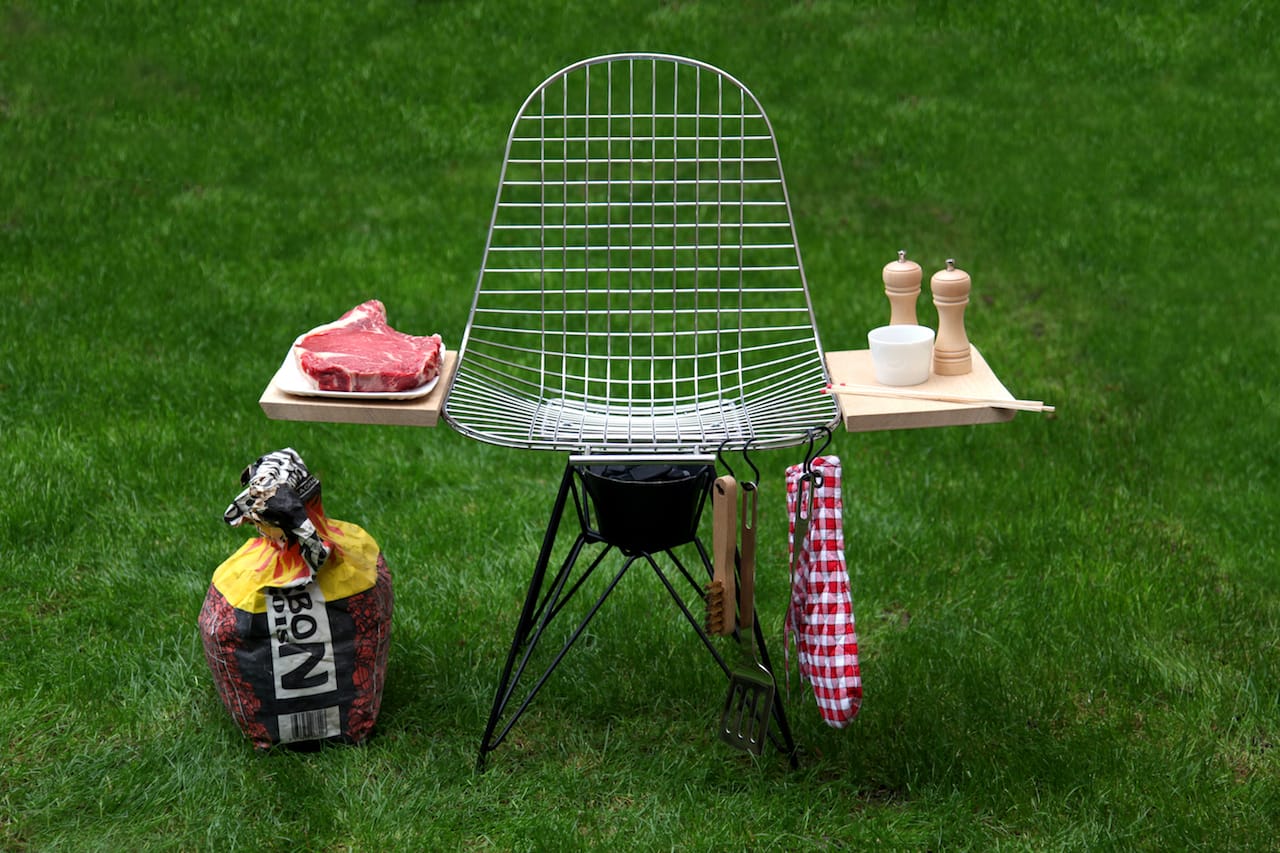
Charles and Ray Eames’s wire mesh chair, a signature piece of mid-century furniture, has received an update — or rather, 50 updates, as envisioned by 50 different creative types. The French social and education arts organization La Source has partnered with Vitra Design Museum to invite artists, designers, and architects from around France to revisit the classic chair and add their own contemporary twists. The new works, which will be on view at l’Hôtel de l’Industrie in Paris this weekend, will go on sale at La Source’s 18th annual charity auction on December 14 to benefit the organization’s arts workshops for children facing familial, academic, or social difficulties. Previous editions of the sale have challenged artists to reinterpret Sori Yanagi’s Butterfly Stool, Jean Prouvé’s Standard Chair, and Ronan & Erwan Bouroullec’s metal side table.

The Eames Wire Chair, also known as the “DKR” — Dining height, K-wire shell, Rod iron base — was originally designed for the Museum of Modern Art’s 1948 “Low Cost Furniture Design” contest, according to Vitra. Inspiration to use the thin industrial material came from Italian-born sculptor Harry Bertoia, who worked in the Eames’s office in the ’40s. Since 1958, Vitra has mass-produced the minimal, shell-like chair, now available with leather seat pads and in an array of colors.
For the auction, most of the artists — who include French designer Philippe Starck and luxury shoe designer Christian Louboutin — chose to give the seat wild updates, with some results so sculptural that they’re no longer functional. Guillaume Delvigne‘s “Gloriette” and sculptor Quentin Garel‘s “Flamingo,” for instance, twist the white wire chair into four-legged objects; on the other hand, Designstudio’s “Barbecue Eames” is made specifically for your next grilling function — just don’t sit on the seat, as it’s meant to heat up your meats.
Many seemed to want to make the chair more comfortable, covering it with softer material. Architect Jean-François Lesage — the son of couture embroider François Lesage and a frequent Loubotin collaborator — wove threads through the holes to create a colorful Madras pattern; Bruno Moinard wrapped his chair in a colorful, woolen jacket. Other creations highlight the holes of the original “DKR”: in a playful nod to this year’s love locks ban at Paris’s Pont des Arts, Starck simply latched locks onto the wire frame, while designer Ionna Vautrin‘s “Gaufrette” covers the seat with a cushion that still reveals its crisscross frame.
If you don’t live in France, you may place orders by phoning in, the auction’s organizers told us. La Source hasn’t announced the starting bids for the seats, but they would make some great gifts, just in time for the holiday season — whether your loved one needs a new office chair, a whimsical barbecue set, or a sculptural planter.

